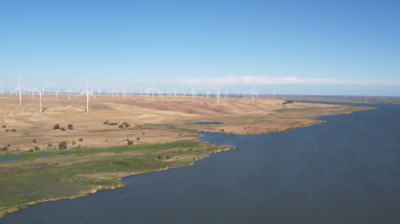New Report: California’s Healthcare Sector Key to Meeting State Climate Action Goals
New Report: California’s Healthcare Sector Key to Meeting State Climate Action Goals
Sector Uniquely Positioned to Take Lead On and Accountability For
Sustainable, Low-Carbon Transformation
SAN FRANCISCO, CA – Despite the recent 10th anniversary of California’s landmark climate change legislation SB 375 targeting global warming pollution, the state is currently falling short of its ambitious targets set to reduce greenhouse gas (GHG) emissions for 2030 and 2050. Meanwhile, the devastating public health and economic consequences of climate change are ever-present in the wake of California’s deadliest wildfires, increased respiratory diseases and extended droughts. A new report unveiled today by the Bay Area Council Economic Institute, California Clean Energy Fund and Health Care Without Harm – Building a Climate-Smart Healthcare System for California – assesses how the healthcare sector is uniquely positioned to play a critical role in helping the state meet its GHG reduction goals.
California’s healthcare sector accounted for 13 percent of the state economy as total spending reached $292 billion dollars in 2016. However, this booming sector is also one of the most energy intensive, responsible for an estimated 10 percent of all GHG emissions nationwide. Hospitals represent the lion’s share of those emissions at 36 percent requiring significant energy to support operations, and unique heating, ventilation and air conditioning needs. Other key contributors to increased levels of GHG emissions generated by healthcare include employee and patient travel, facilities built, products and equipment, food procured and served, and waste generated. The analysis estimates that California’s carbon-intense health sector could be responsible for between $1.6 and $9.5 billion in long-term damages each year.
“Transitioning away from fossil fuels and toxic chemicals is the most important public health intervention we can make to support healthy people and healthy communities,” says Gary Cohen, President of Health Care Without Harm.
With its mission to protect and improve health, combined with the huge economic costs of inaction, California’s healthcare industry is taking important steps to advance climate-smart strategies. Diving into case studies across the state, the report explores the cutting-edge innovations, strategies and investments being led by some of the top industry leaders like Kaiser Permanente, UC San Francisco, Dignity Health, Palomar and UC San Diego.
“Meeting state goals of bringing GHG emissions to 1990 levels will require the entire healthcare industry to act and transform,” says Dr. Micah Weinberg, President of the Bay Area Council Economic Institute. “Just as California is a leader for the nation in taking action on climate change, healthcare can serve as a role model for all private and public sectors as it transitions to a sustainable, low-carbon future.”
“We know that when a sector seizes such an opportunity in its entirety, great transformation can happen that will improve the bottom line, build jobs and provide solutions to climate change,” says Danny Kennedy, Managing Director of the California Clean Energy Fund. “We want to start a race of entrepreneurs and intrapreneurs driving the innovations and new business models to do this in healthcare.”
The report outlines key sector recommendations necessary to achieve long-term sustainability and resiliency. Energy audits of facilities, investing in on-site and off-site renewable energy, waste reduction, conserving water and purchasing local, sustainably-grown food are among the key industry recommendations. Advancing smart policy on local, state and national levels will also be crucial, including streamlining the approval process of energy-saving technologies, creating an enforcement arm for the Solar Rights Act, continued state funding for renewables and energy storage, expanding Zero Waste Principles, and creating a sustainable water supply, among others.
# # #
About the Bay Area Council Economic Institute
The Bay Area Council Economic Institute is a public-private partnership of business, labor, government and higher education that works to foster a competitive economy in California and the San Francisco Bay Area, including San Francisco, Oakland and Silicon Valley. The Economic Institute produces authoritative analyses on economic policy issues affecting the region and the state, including infrastructure, globalization, energy, science and governance, and mobilizes California and Bay Area leaders around targeted policy initiatives.
About the California Clean Energy Fund
The California Clean Energy Fund (CalCEF) is optimizing the clean energy transition by connecting money to investments, ideas to support and issues to solutions. Driven by the opportunity to accelerate climate protection, CalCEF is committed to creating 100%+ clean energy to benefit all. CalCEF’s family of initiatives seek to bring about the energy transition already underway, but sooner and better.
About Health Care Without Harm
Health Care Without Harm seeks to transform health care worldwide so that it reduces its environmental footprint, becomes a community anchor for sustainability and a leader in the global movement for environmental health and justice. Health Care Without Harm works to reduce health care’s carbon footprint, foster climate resilient health systems, mobilize the health sector to address climate change as a public health issue, and advocate for solutions that accelerate a transition to clean, renewable energy.





